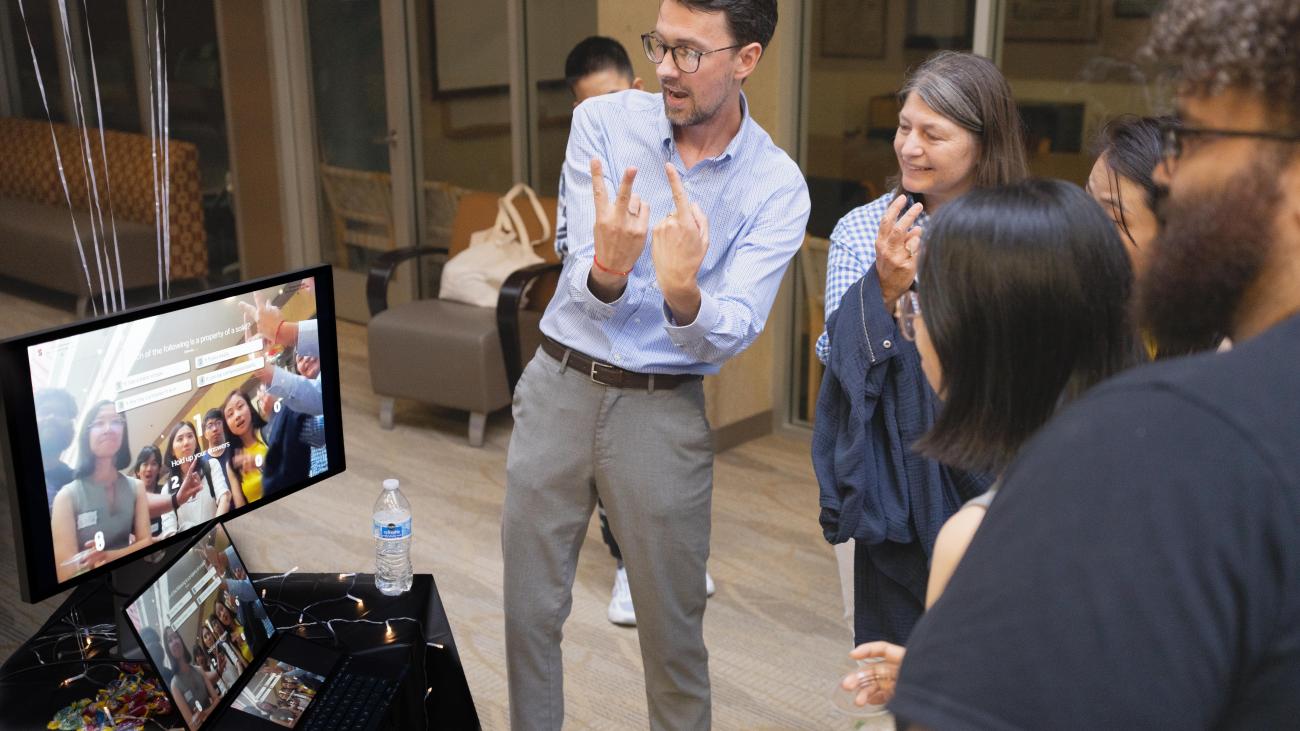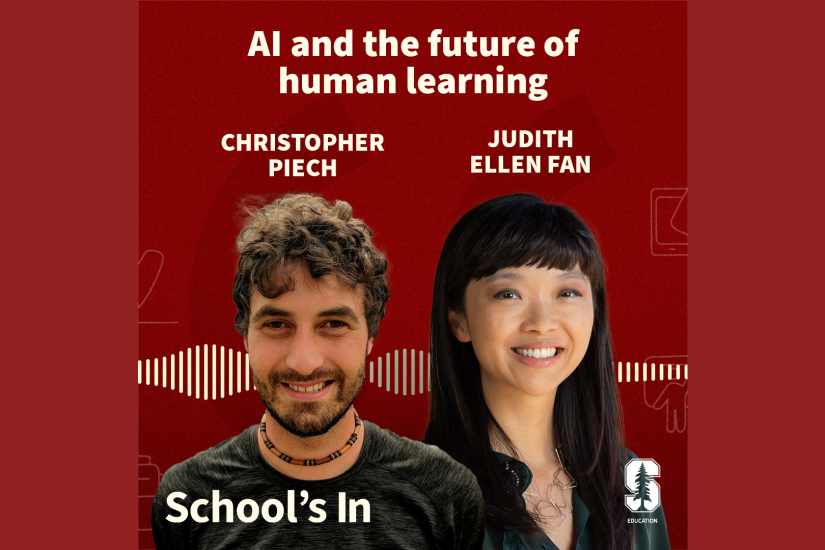
Designing with learners in mind: GSE students create tools for the future of education
About one in five adults are neurodivergent, meaning their brain works, processes, and learns information differently. Additionally, about 40% of those people are more likely to be unemployed or underemployed than their neurotypical peers.
That’s why Christine Irish, a student in the Learning Design and Technology (LDT) master’s program at Stanford Graduate School of Education (GSE), wanted to develop TryTo.Ai, a platform that uses artificial intelligence to empower neurodiverse job seekers through interview practice and online learning modules. The platform, which she created along with fellow GSE student Mary Allison Steel from the International Education Policy Analysis program, was Irish’s master’s project for the LDT program.
“Even when you control for job qualifications, the interview process is a big barrier to hiring for neurodiverse people, since they tend to struggle with things like maintaining eye contact and making small talk,” said Irish, who has ADHD and runs the platform with a neurodiverse leadership team.
“One of the things I love about designing a project in the accessibility and disability support space,” she added, “is that when you build tools that are more accessible for people with disabilities, you’re building tools that are better for everyone.”
Irish was one of 17 students to present her project at the annual LDT Expo, which was held at the Center for Education Research at Stanford (CERAS) on Friday, Aug. 2. The event gives students the chance to share their capstone projects with the broader community.
“A lot of people have passion, which is great, but it takes a lot to turn that passion into real actual products,” said Karin Forssell, LDT program director and a senior lecturer at the GSE.
“This event just brings home to me every year just how amazing it is when you set people up who are passionate, interested, smart, and dedicated, and they get to pursue their dreams.”
An emphasis on human-centered design
An integral part of the project for LDT students is ensuring that the solution they’re creating is human-centered and useful. Students survey and interview members of their target audience and adjust based on feedback.
For Ana Marini and Anchal Sayal, this process led them to change the focus of their project completely.
“When we started interviewing U.S. parents for our project, which was originally going to be about building children’s English literacy skills in the home, we came across a very different problem,” said Sayal, who is originally from Gurgaon, India. “We met a parent who told us that while he had no problems with English, he was running into problems teaching his child his native language.”
“We met another parent, Ellie, during a forum and she told us about how she and her husband wanted to teach Spanish to their child, sharing a lot of challenges with us that inspired us to design a tool that could fit into their routines and interests,” said Marini, who is from São Paulo, Brazil.
Marini and Sayal used the feedback to pivot and create Hi! Langee, a website and app that promotes discussion in a native language by providing parents with conversation starters based on their child's interests and routines.
The app evolved as the pair sought out feedback at different forums and events from parents wanting to raise bilingual children.
“We were convinced that this was a problem worth solving, and we wanted to figure out how we could create a tool that could help parents continue to maintain their native language at home through simple strategies,” Sayal said.
Making technology more accessible
Another key part of using technology to design for better learning outcomes is finding ways to make best practices more accessible.
For his project, Brent Johnson combined his international classroom experience with a love for innovation to create Quizeo.ai, an assessment tool that uses games and computer vision technology to make learning fun and accessible.
“While gamified learning experiences have been shown to improve learning gains … they’re not accessible, because everyone in the classroom has to have a device,” said Johnson, who is originally from Minnesota.
When playing quiz games on Quizeo.ai, students use hand gestures to indicate their answers to questions, rather than using a smartphone or tablet to respond.
“The U.S. is one of the only countries in the world with a 1:1 student to device ratio, so most other countries can’t integrate existing platforms within their classrooms,” he said. “But if you have computer vision, all you need is a laptop and everyone’s fingers, or whatever they’re using to signal their response to questions.”
To further differentiate Quizeo.ai from its competitors, the platform allows users to compete against other classrooms, and teachers are able to create quizzes by entering information in an AI tool.
“I really enjoyed building Quizeo.ai and integrating all of these technologies into it,” Johnson said. “I would love to get it into classrooms and see what the response is.”
A community linked by a love of learning
At the center of the LDT cohort, in addition to a strong desire to better education, is a culture of support.
“I think one of the best things about LDT is that it’s a built-in group of folks who love giving each other feedback and supporting each other’s work and testing each other's products,” said Irish, who says improvements in TryTo.ai were influenced by her peers.
“The cohort is the best part of LDT,” Johnson said. “Everyone is super supportive of each other, we’re a really close group, and we all know each other’s projects inside and out. We’ve done so many usability tests with one another, had mock interviews, and helped one another with connections.”
Together the 2024 LDT cohort produced 13 projects that provide solutions to issues in classrooms, workforce development, family caregiving, and the hackathon space, among others.
“One thing I’ve learned here at Stanford is that although we have this massive structure and all these resources, I think that in the end it’s all about people,” said Marini, who is a Lemann Center fellow and intern at the Stanford Accelerator for Learning.
To view all 2024 LDT master’s projects, visit the project page.
Faculty mentioned in this article: Karin Forssell



